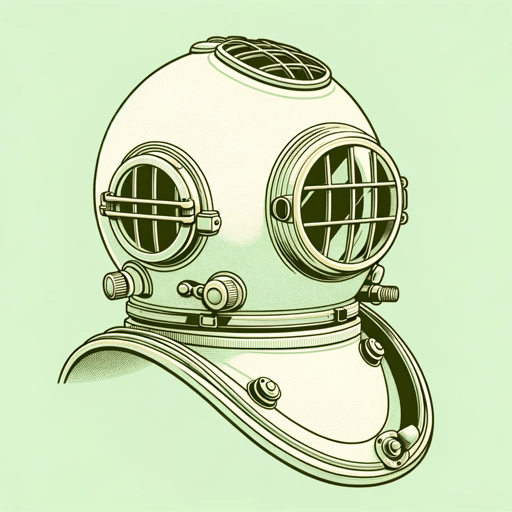62 pages • 2 hours read
Jennifer EganThe Candy House
Fiction | Novel | Adult | Published in 2022A modern alternative to SparkNotes and CliffsNotes, SuperSummary offers high-quality Study Guides with detailed chapter summaries and analysis of major themes, characters, and more.
Summary and Study Guide
Overview
The Candy House is a 2022 novel written by Jennifer Egan. It was a New York Times bestseller and one of Barack Obama’s top 10 books of 2022. The Candy House revisits characters and themes from Egan’s Pulitzer Prize-winning novel A Visit From the Goon Squad (2010). Though knowledge of A Visit From the Goon Squad will help readers connect characters, The Candy House is a novel that can stand on its own. Jennifer Egan is the author of seven novels and also works as a journalist. Along with the Pulitzer Prize, she has won awards such as the Andrew Carnegie Medal and the National Book Critics Circle Award.
The Candy House is a novel in which seemingly disparate stories connect characters and themes. The book explores themes of technological advancement, abuse of social media, existential crisis, and human identity.
This guide refers to the 2022 Kindle eBook edition.
Plot Summary
Part 1 of the novel begins with a host of characters who struggle with questions of authenticity, dream-making, and life-building.
In Chapter 1, readers are introduced to Bix Bouton, a tech genius who developed online software that gathers and shares human memories, creating a collective consciousness. Bix is unfulfilled, though, and craves intellectual and existential stimulation. Desperate to find a new project, he disguises himself as a graduate student to join a small group of academics who discusses life’s big questions.
In Chapter 2, Alfred Hollander sees people as manifestations of their insecurities and inauthenticity. He undertakes social experiments to make people around him feel uncomfortable. Alfred made a documentary on geese migration that interests a PhD candidate in sociology named Rebecca. At first, Alfred rejects her requests to use his documentary in her research, but after visiting a man he once idolized, Alfred starts to think that maybe his documentary is interesting after all.
In Chapter 3, Miles Hollander and his cousin’s husband, Drew, undergo an incredible experience. Drew is a doctor who serves struggling patients, and his wife is a sculptor. Miles recently lost his carefully curated image to his addiction and an affair. He visits Drew to find out how he could be so happy. Miles later attempts suicide by jumping out of a hot-air balloon he shares with Drew. Drew saves his life, and he and Miles develop an unlikely but meaningful friendship. Miles turns his life around; he passes the bar exam and becomes a politician.
In Chapter 4, Drew’s son Lincoln has a hyper-analytical mathematical mind and struggles to find connection. Lincoln quantifies everything and is surprised to discover that human behavior is not quantifiable. He is in love with his colleague, M, and he deduces that she’ll marry her boyfriend, Marc. Lincoln’s commitment to quantification is turned upside down when his boss O’Brien is fired for sabotaging the company. Lincoln’s statistical analysis is proved wrong again when M leaves Marc and marries Lincoln.
In Chapter 5, Melora provides a retrospective of her family’s history, including her mother, Miranda Kline, the author who inspired Bix’s technology. Melora and her sister Lana grow up with Miranda, a generous mother who gave up her academic career to have children with Lou Kline, a famous record producer with four children from two other marriages. They divorce, and Melora and Lana don’t get to know their father until Miranda resumes her academic career. Miranda explores Brazil in search of a mysterious indigenous community, so Lana and Melora move in with Lou and get to know him better. When Miranda comes back from her research travels, she is notably changed. Melora and Lana continue to live with their father while she writes her influential text explaining how algorithms of human behavioral understanding are possible when there is a wealth of intimate knowledge of individual stories. Lou’s business is threatened by the rise of streaming services, so Melora sells her mother’s intellectual property to Bix, who uses the algorithms to develop collective consciousness. This grows the wedge between Melora and her mother. Long after his death, Melora is devoted to her father’s dying business and runs it alone while her sister and mother disappear from her life.
In Chapter 6, Lou’s daughter Charlie Kline uses Bix’s software to access her father’s memories. Charlie wants to imagine her father’s life and assumes his memories will help her identify more with Lou. But Charlie only sees the birth of Lou’s business and doesn’t discover anything particularly revelatory about him. Because Charlie, like Melora, tries to identify herself in parallel with her father, collective consciousness disappoints her expectations.
In Chapter 7, Lou’s daughter Roxy has a similar experience. Roxy has a drug addiction and has lost many friends and family members to death and addiction. Roxy taps into the collective consciousness to revisit one of her treasured memories: A trip to London with her father. She is disappointed to discover that he didn’t want Roxy to come on the trip and regrets inviting her. Roxy’s only happy memory with her father is destroyed by the knowledge of his memory.
In Chapter 8, the reader meets Chris Salazar. His father was close friends with Lou Kline, so Chris knows Lou’s family and works with Roxy in her treatment center. Chris lost a best friend to addiction, and his girlfriend broke up with him on her path to sobriety. Chris sees himself as a sidekick in the story of his life and only understands himself in the context of others. He works for a company and extrapolates plots and elements into a database. Chris isn’t certain what the point of his job is. He is yet again relegated to a sidekick role when a coworker asks him to help pick up a friend from the airport. The man disappears, and Chris ends up stuck with his suspicious and mysterious luggage. Chris camps out in a well-known drug house while he waits to see what happens with the suitcase.
In Chapter 9, a preteen named Molly agonizes over her friendship with a mean girl, Stella. Molly searches for her at their country club but instead finds Lulu, a mysterious girl who once lived with Molly’s former neighbors, the Salazars. They took Lulu in when her mother went to prison. Lulu is still friends with Chris Salazar and has an intimate connection with his friend Colin. Molly decides to tag along with Lulu. The boys show them where they smoke weed. Molly doesn’t partake but is thrilled to have this experience. When they return to the club, Lulu leaves with her mother. Molly waits for her family, blissful in her momentary isolation.
In Chapter 10, Lulu reappears years later, as an adult. Lulu is happily married but has an odd job: She volunteers as a Citizen Agent, a role that makes her a professional escort and spy. Her job turns violent, and she is shot. She narrates this chapter through a second-person list of directives, as though she perceives life as a series of commands or plans.
In Chapter 11, Molly’s sister Hannah narrates the story of her mother’s unlikely friendship with Jules Jones, Chris’s uncle. When Chris’s father Beenie divorces his wife Stephanie, her troubled brother Jules moves in. Noreen, Hannah’s mother, is instantly suspicious of Jules. She calls the police on him, calling him an intruder, and she stands on their lawn as if on guard. At Stephanie’s cocktail party, Noreen convinces Jules to get over his ex-girlfriend and help her measure the fence, which she wants to make electrical to solidify their feud. Hannah observes as Noreen and Jules measure the fence, chat, and stare up at the sky together.
Chapter 12 is a series of messages between multiple people. Lulu’s husband, Joseph, is concerned about her well-being after being traumatized by her role as a Citizen Agent. He reaches out to her mother, Dolly, to help with Lulu and their twins. Meanwhile, Lulu has discovered that her father is a movie star named Jazz. She is determined to meet him but needs to keep it a secret from her mother. Dolly was once a PR representative and helped engineer a public relationship between a movie star named Kitty and a despotic General B, which led to democracy, but Dolly is ashamed of this past. Lulu is so desperate to meet her father that she convinces Kitty’s assistant, who wants to make a documentary about Kitty and General B, to reach out to Dolly in exchange for Jazz’s contact information. Lulu reaches out to Jules Jones, who has become a successful music journalist, to invite Jazz for an interview because Jules wrote a book about Jazz’s favorite band, the Conduits. Lulu becomes Jazz’s third assistant, and Jazz helps her remove her weevil and treat her PTSD. Jules asks the band members to reunite at the interview with Jazz. On Jazz’s boat, the Conduits reunite, and Lulu meets her father.
In Chapter 13, the reader meets Bix Bouton’s son Gregory. Gregory long ago rejected Bix’s technology because he believed that it threatened fiction. Gregory got an MFA and became an unpublished author, searching for a story and working odd jobs to fund his lifestyle. When his father dies from ALS, Gregory is tortured by their lack of closeness. Bix left a considerable sum to Chris Salazar’s company Mondrian, a program that allows people to become avatars and disappear from life’s problems in an alternate world. Mondrian is seen as Mandala’s competitor, but Bix had a special reason for leaving Chris money. Miranda Kline, whose algorithms inspired Bix’s technology, became an “eluder,” someone who disappears into the Mondrian vortex and never returns to real life. Miranda died in Brazil without anyone knowing. Gregory visits a former writing professor, Athena. While walking to her apartment, Gregory realizes that he recognizes the city from his father’s uploaded memories. Athena commands him to write, and Gregory decides to write about the lives of city dwellers he sees from his window.
In Chapter 14, Ames Holland’s victorious and unlikely childhood baseball victory is presented as an example of how stories are more valuable than facts. The facts of Ames’s life are what they are: He was always relegated to the identity of the forgotten middle child, he joined the military and spent his career regretting his violence, then retired and settled into his childhood home. The knowledge of Ames’s life is not as interesting or moving as the story of Ames’s life.
Related Titles
By Jennifer Egan




